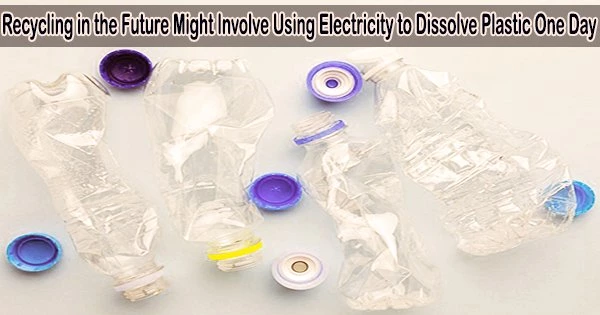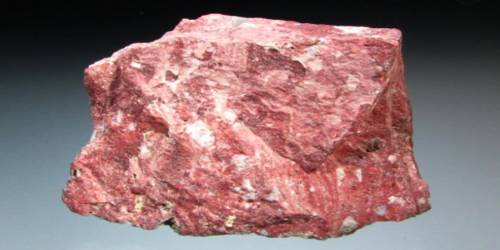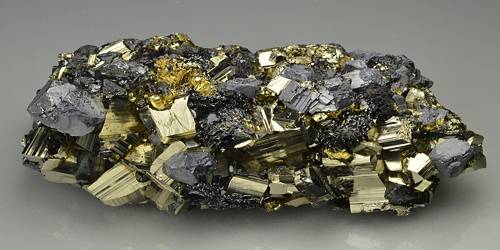A novel technique for recycling a common kind of plastic that may be found in soda bottles and other packaging has been discovered by chemists at CU Boulder. The team’s procedure is so straightforward that you can witness the plastic disintegrate in front of your eyes. It depends on electricity and some clever chemical interactions.
The researchers described their new approach to chemical recycling in the journal Chem Catalysis.
The study tackles the mounting problem of plastic trash around the world. The Environmental Protection Agency estimates that in 2018, the United States alone produced approximately 36 million tons of plastic goods. A majority of the waste winds up in landfills, said study co-author Oana Luca.
“We pat ourselves on the back when we toss something into the recycling bin, but most of that recyclable plastic never winds up being recycled,” said Luca, assistant professor in the Department of Chemistry. “We wanted to find out how we could recover molecular materials, the building blocks of plastics, so that we can use them again.”
In the new research, she and her colleagues got one step closer to doing just that.
The group concentrated on the polyethylene terephthalate (PET) material, which customers come into contact with on a daily basis in products like water bottles, blister packs, and even some polyester fabrics.
In small-scale lab tests, the scientists combined little pieces of the plastic with a certain kind of molecule and then used a low electric voltage. Within minutes, the PET began to disintegrate.
We pat ourselves on the back when we toss something into the recycling bin, but most of that recyclable plastic never winds up being recycled. We wanted to find out how we could recover molecular materials, the building blocks of plastics, so that we can use them again.
Professor Oana Luca
Before the team’s recycling tool can effectively tackle the problem of plastic waste in the globe, there is still a great deal of work to be done. But it was nevertheless entertaining to see the trash, which can remain in garbage heaps for generations, vanish in a matter of hours or days, according to Phuc Pham, the study’s principal author.
“It was awesome to actually observe the reaction progress in real time,” said Pham, a doctoral student in chemistry. “The solution first turns a deep pink color, then becomes clear as the polymer breaks apart.”
One person’s trash
Luca said it’s a whole new way of thinking about the possibilities of trash. Recycling bins, she observed, may appear to be a practical answer to the plastics issue facing the planet. However, the majority of communities around the world have had difficulty gathering and sorting the daily mountain of trash that individuals produce.
The result: Less than one-third of all PET plastic in the U.S. comes close to being recycled (other types of plastic lag even farther behind). Even so, techniques such as melting leftover plastic or dissolving it in acid can change the material’s characteristics.
“You end up changing the materials mechanically,” Luca said. “Using current methods of recycling, if you melt a plastic bottle, you can produce, for example, one of those disposable plastic bags that we now have to pay money for at the grocery store.”
She and her team, in contrast, want to find a way to use the basic ingredients from old plastic bottles to make new plastic bottles. It’s like smashing your Lego castle so that you can retrieve the blocks to create a whole new building.
Another’s treasure
The team used a technique called electrolysis, which involves breaking molecules apart with electricity, to accomplish that achievement. For instance, chemists have long known that they may split water molecules into hydrogen and oxygen gas by applying a voltage to beakers of water and salts.
But PET plastic is a lot harder to divide than water. In the new study, Pham ground up plastic bottles then mixed the powder into a solution. Next, he and his colleagues added an extra ingredient, a molecule known as (N-DMBI)+ salt, to the solution.
According to Pham, when electricity is present, this molecule creates a “reactive mediator” that can contribute its extra electron to the PET, unraveling the plastic grains. Imagine it as the chemical equivalent of giving a wooden board a karate chop.
Although the researchers are still attempting to figure out exactly how these events happen, they were able to disassemble the PET into its component parts, which they could then salvage and possibly use to create something new.
Deploying only tabletop equipment in their lab, the researchers reported that they could break down about 40 milligrams (a small pinch) of PET over several hours.
“Although this is a great start, we believe that lots of work needs to be done to optimize the process as well as scale it up so it can eventually be applied on an industrial scale,” Pham said.
Luca, at least, has some big-picture ideas for the technology.
“If I were to have my way as a mad scientist, I would use these electrochemical methods to break down many different kinds of plastic at once,” Luca said. “That way, you could, for example, go to these massive garbage patches in the ocean, pull all of that waste into a reactor and get a lot of useful molecules back.”
















